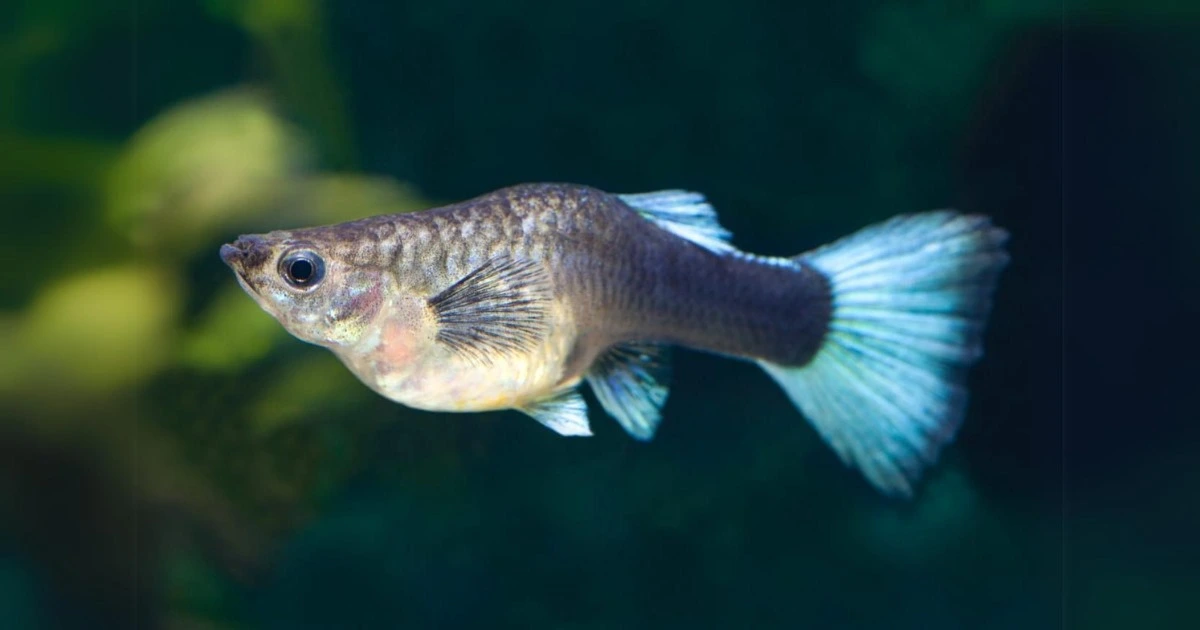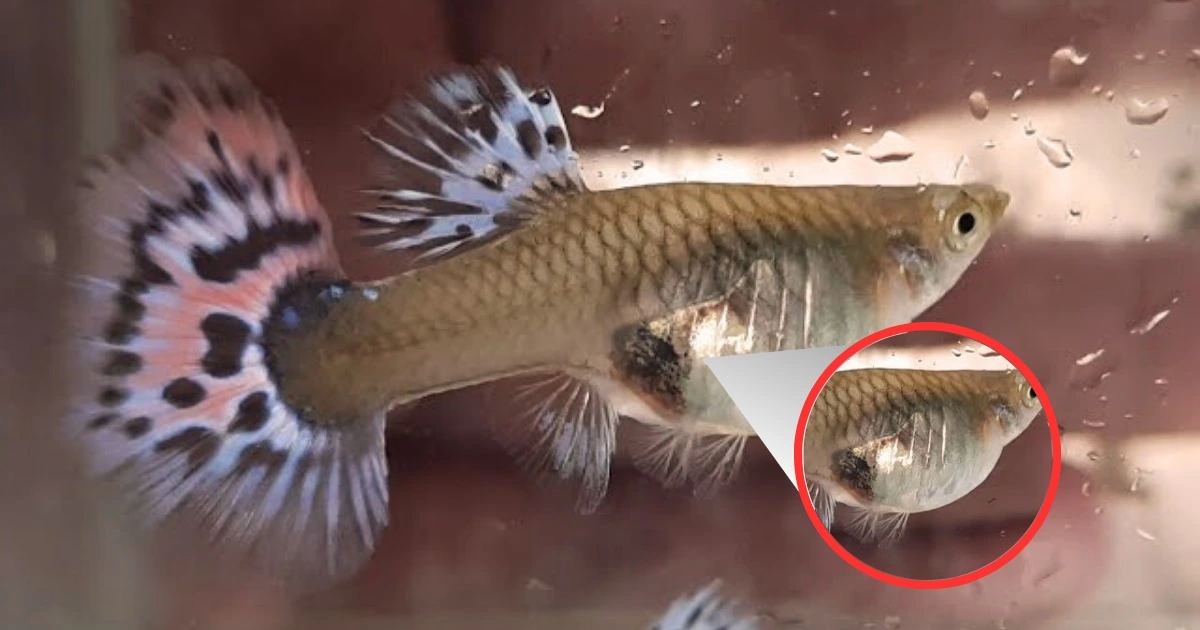Are you wondering if your guppy is about to have babies? Guppies are small, colorful fish that are easy to care for and fun to watch. If you have a pregnant guppy, you might be excited to see the tiny baby guppies (called fry) being born. But how do you know when your guppy is ready to give birth? In this guide, we’ll talk about the signs that show your guppy is in labor, so you can be ready to help her and keep the new babies safe.
Signs of a Guppy in Labor
Guppies are a popular choice for aquarium enthusiasts due to their vibrant colors and dynamic personalities. These small, resilient fish are not only a delight to observe but also offer a unique opportunity to witness the miracle of life, as they are livebearers. If you’re keen on the well-being of your guppy, especially during pregnancy and labor, understanding the signs and processes involved is crucial. This guide will help you identify when your guppy is in labor and provide detailed advice on how to care for them during this critical time.
1. Introduction to Guppy Pregnancy
Understanding Guppy Reproduction: Guppies are prolific breeders. A female guppy’s ability to reproduce every month makes her pregnancy a common event in guppy-keeping. However, recognizing the onset of labor is key to providing the necessary care.
Duration and Signs of Pregnancy: Guppy pregnancies typically last between 21 to 30 days. Signs of pregnancy are quite visible, including a noticeably enlarged abdomen and the appearance of a dark gravid spot near the tail as the embryos grow.
Related reading: Why is my guppy still fat after giving birth

2. Detailed Signs of a Guppy in Labor
When a guppy is nearing labor, several behavioral and physical signs become evident. Recognizing these signs will help you prepare for the birthing process.
a. Behavioral Changes
- Increased Isolation: As labor approaches, a female guppy often seeks solitude, avoiding the active swimming areas of the tank.
- Restlessness: Shortly before labor, the guppy may swim erratically or appear restless, then suddenly become lethargic.
- Breathing Patterns: You might notice your guppy breathing rapidly as labor nears due to the stress and exertion of the impending birth.
b. Physical Indicators
- Belly Shape and Position: The abdomen may appear boxy, and as labor progresses, you may even see the outlines of fry in her belly.
- Gravid Spot: The gravid spot, located near the anal vent, becomes darker and more pronounced as labor approaches.
3. The Birthing Process Explained
Labor in guppies is generally swift but can vary in duration. Here’s what typically happens:
- Labor Duration: Labor can last from a few minutes to several hours, depending on the number of fry being born and the mother’s health.
- Birth Intervals: Guppies can pause between delivering each fry, sometimes taking breaks of several minutes.
4. How to Support Your Guppy During Labor
Creating a conducive environment for birthing can significantly impact the survival rate of the newborn fry and the health of the mother.
- Tank Conditions: Maintain the water at a stable temperature and pH, and ensure the tank is clean to avoid infections.
- Stress Reduction: Minimize noise and disturbances around the tank to keep the pregnant guppy calm.
- Separation: Consider using a breeding box or a separate breeding tank to isolate the mother during labor. This prevents stress caused by other tank mates and protects the fry once they are born.
5. Post-Birth Care
The period immediately after birth is critical for both the mother and her fry.
- Isolation: After the fry are born, isolate the mother from them if they are in the same tank, as guppies can sometimes eat their offspring.
- Fry Care: Feed the fry specialized food designed for baby fish. High-quality, fine-grained food or liquid fry food will help them grow during their initial vulnerable weeks.
Guppy Gestation Period
The gestation period for a guppy, which is the time from conception until birth, typically lasts about 21 to 30 days. This period can vary depending on several factors, including the water temperature, the health of the female guppy, and the specific conditions in the aquarium.

Factors Affecting Guppy Gestation:
- Water Temperature: Warmer water can speed up the gestation period. Guppies thrive in water temperatures between 72 and 82 degrees Fahrenheit (22 to 28 degrees Celsius). If the water is on the warmer side of this range, you might notice that the gestation period is slightly shorter.
- Health and Age of the Female: Younger and healthier female guppies tend to have a smoother and potentially quicker gestation period. Older or stressed females might have a longer gestation or face difficulties during pregnancy.
- Nutrition: Proper nutrition is crucial for a healthy gestation period. High-quality fish food that includes a mix of proteins, vitamins, and minerals can support a healthy pregnancy.
- Stress Levels: Minimizing stress is important for pregnant guppies. High levels of stress can not only extend the gestation period but also increase the risk of complications during birth.
Recognizing Pregnancy:
To identify if a guppy is pregnant, look for a visibly enlarged belly and the darkening of the gravid spot near the tail. As the pregnancy progresses, the belly will continue to grow, and the gravid spot will become larger and darker.
Tips for Care During Gestation:
- Maintain Optimal Water Conditions: Regularly check and adjust the temperature, pH, and cleanliness of the water.
- Provide a Balanced Diet: Feed a variety of foods, including flakes, frozen, and live food, to ensure complete nutrition.
- Reduce Stress: Keep the aquarium environment calm and avoid sudden changes in lighting or water parameters.
Understanding and supporting your guppy through the gestation period can lead to a successful birth and healthy fry. By providing optimal care, you help ensure the well-being of both the mother and her upcoming babies.
Conclusion
Witnessing your guppy give birth is a rewarding experience that requires preparation and care. By understanding the signs of labor and knowing how to properly support your guppy through pregnancy, labor, and post-birth, you’ll ensure the health and safety of both the mother and her new fry. Isn’t it fascinating to see how these tiny creatures manage their birth with such intricate details?
Have you found this guide helpful for spotting the signs of labor in your guppy? Do you have any tips or stories about your guppy births that you’d like to share? Let’s discuss in the comments below and learn from each other’s experiences!

3 thoughts on “Signs of a Guppy in Labor | How to Spot and Prepare”